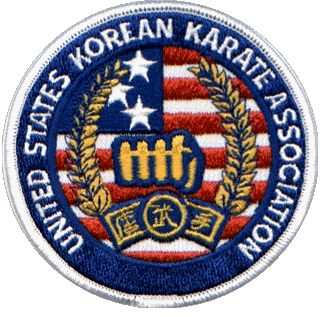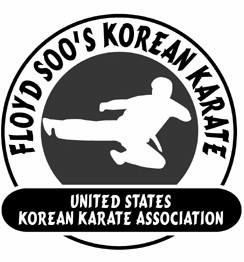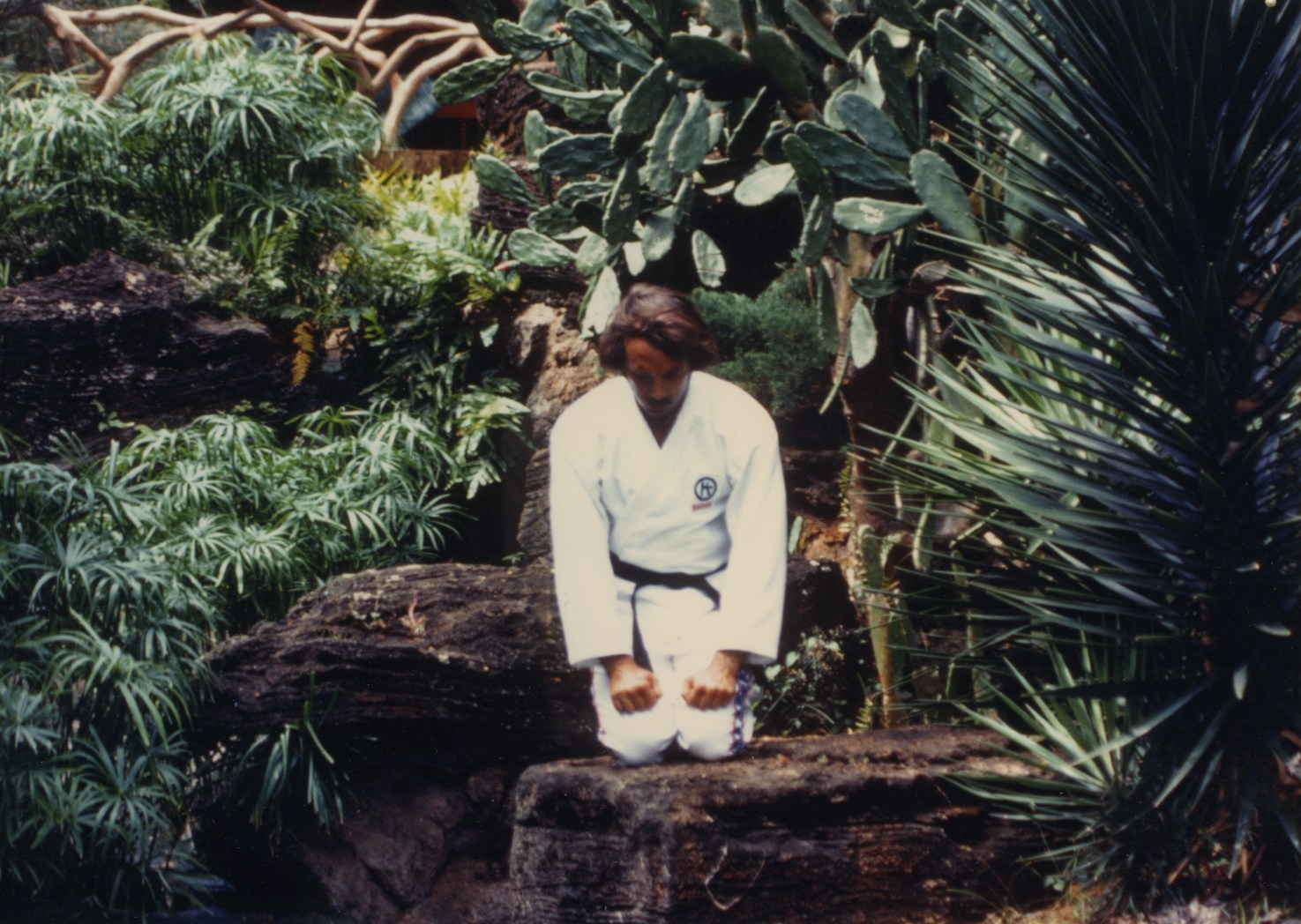 |
||||||||||||||||||||||||||||||||||
|
|
||||||||||||||||||||||||||||||||||
 |
|||||||||
 |
|||||||||
 |
|||||||||
|
When it comes to the philosophy or attitude that we here at Floyd Soo’s Korean Karate live and train by, it can be best described as the “Warrior’s Mindset” or the “Martial Artist’s Mindset.” There have been hundreds, maybe thousands of books written on the philosophy of the Martial Arts. Many are old and there are certainly some noteworthy ones that are more recent. What separates a Martial Artist from a street fighter is the attitude and philosophy by which that person lives by. The martial artist keeps in high esteem: honor, truth, justice, peace, discipline, dedication and respect. The street fighter or bar brawler does not concern himself with these tenets. As the Martial Artist trains to be able to defend themselves, he or she also trains to be able to handle the many other challenges in life with courage and integrity. Many of the staff here at Floyd Soo’s Korean Karate in their research and discussions on philosophy and proper attitude will have read some of the following contemporary texts; “Living the Martial Way” by Maj. Forrest Morgan; “Tao of Jeet Kune Do” by Bruce Lee; “Handgun Combatives” by David Spaulding. These are in addition to some of the classics like “The Art of War” by Sun Tzu. What follows here are some thoughts and excerpts from some of these contemporary books. What you will read here is NOT intended to replace the classic, traditional thoughts and philosophies from accepted works in the past! We like to think these are “in addition to” the classic thoughts... |
|||||||||
|
Developing the Warrior’s Mind (Based on thoughts from "Handgun Combatives" by Dave Spaulding, 2002) The mind is the ultimate weapon. More often than not, what you do prior to a contest is going to determine the outcome. The person who is caught unprepared to respond is likely to lose. Our warrior’s mindset must deal with what happens before a confrontation. This is a lifestyle commitment, not something that occurs just during any kind of conflict. It is something that you must live, something that must be a part of your being, your soul. "Be Prepared!" You must prepare ahead of time. You must see any potential threat coming long before any attack occurs; then respond appropriately with just a moment's notice, with a fury that is both final and decisive. The person(s) who are attacking you have already made the decision to act. You must now avoid, evade or counter that intended act and, if you must counter it, counter it with a level of force that is far greater than what they are attacking you with. It is furious, it is final and there is no going back. Survival skills are perishable, in order for them to stay at their best, they must be practiced. Being aware that this practice is necessary is part of developing the warrior’s mind. One way to determine if a technique, tactic or piece of info is worthy of your time is the "Three S Test." First, does it make SENSE to you? Second, is it SIMPLE to perform? Finally, is it STREET proven? A very important aspect of the warrior’s mind is to be aware of what's going on around us. Awareness is something that is not easy to do as we go about our daily lives. Situational awareness is heightened by the use of all your senses, but the primary sense used is vision, though sound is also very important. Observation and scanning techniques are critical, and you should begin to develop them ASAP. One of the biggest mistakes that many people make is that when they are observing their environment, they look at far away things before they look at things that are close. Try this experiment: Have someone turn around and cover their eyes; take a couple of coins, put one 20' from their feet and the other at their toes. Then, have them turn around and look for the coins. Inevitably, they will see the coin at 20' before they see the one at their feet. In general, the threat that is closer is the greatest threat. So we must learn to look close, then far. This is why the 21/360 rule is so important. Know the things that are in the 21' circle first, then move out. Primary threats are in that circle, Secondary threats are generally outside of that circle. The next thing that you must develop for the warrior’s mind is desire. Instructors can tell you what to do (give you the tools to do it), but they cannot make you willing to do it. You must have the will to fight back, the will to do whatever it takes come out on top. Many believe that will beats skill. Being willing to do whatever it takes, no matter how distasteful, to come out on top of your confrontation. It also means being willing to train, yes, spending your own time and money to invest in your own survival. Part of being willing means controlling fear. You must be able to channel fear into willingness. Fear should make you mad, not overpower you. According to Police Psychologist Dr. Alexis Artwohl, here are some things that you can do to control and diminish fear: 1. Stay up to date on defensive tactics in all areas of your life. Train regularly with all of them (weaponry, hand to hand, grappling, escapes, pressure point tactics, etc.). 2. Develop confidence backed up by real skill. Know that your techniques will really work when you need them. The more competent you believe you are, the more you train, the less likely you are to feel overwhelmed by fear. 3. Practice mental imagery (NLP) of high risk situations AT LEAST once a week. 4. Learn what the physiological reactions are to your body's flight or fight response (chemical dump, "Body Alarm Reaction"), and understand that this happens no matter how brave you are. 5. Understand and totally accept the possibility that you may one day have to use deadly force. As distasteful as it is, not if, but when you engage, you may have to take a life in order to save your own or that of a loved one. It's ugly, dirty and nasty; it's not warm and fuzzy, but it's reality. 6. Review any past high risk situations that you are now aware of and determine what needs to be done to improve that situation in the future. Constantly strive to improve your awareness, observation and assessment skills. The threat you see coming can be avoided or evaded, making a confrontation less likely. 7. Trust your instincts and intuition. Don't worry about social pressures or other outside influences. Do what you think is right. Protect Numero Uno! 8. Develop a strong will to win, no matter what the situation. Be prepared, do whatever it takes, no matter how distasteful. Be willing! 9. Maintain a high level of physical fitness. 10. Be knowledgeable of crime trends and criminals in your area. Know your work place, your neighborhood and your neighbors. 11. Don't let life beat you up and get you down. 12. Make sure you and your family gets any psychological assistance available after any traumatic event. Deal with the aftermath of (post traumatic) stress with professional help. |
|||||||||
|
Self Defense Thoughts, Ideals & Philosophy The police cannot be everywhere. The U.S. Supreme Court has ruled that the police do not have the responsibility to protect individual citizens, they are empowered to protect society as a whole. It is the responsibility of each of us to defend ourselves against crime. - “Handgun Combatives” by Dave Spaulding “Warrior Mind-set” – Unlike the hobbyist or the athlete, the warrior; acknowledges his warriorship and pursues internal versus external objectives.” Think, feel and act like a warrior. Set yourself apart from the rest of society by your personal excellence. Throw away your vanity, and pursue internal objectives. Learn to recognize the difference between internal and external motivations. The Martial Way is not a sport, hobby, or occasional pastime, it is a way of life. - “Living the Martial Way” by Maj. Forrest Morgan “You must be deadly serious in your training. When I say that, I do not mean that you should be reasonably diligent or moderately in earnest. I mean that your opponent must be in your mind, whether you sit or stand or walk or raise your arms.” – Gichen Funakoshi’s First Rule for the study of Karate-Do Fighting (for our lives) is not fun. Faced with a hostile threat, there are four things that the human organism has been proven to do: fight, flee, posture or submit. Without a doubt, fighting is the best option. Yet, sometimes it is not always the most advantageous. Thus fleeing (“tactical withdrawal”) a situation in which there is no chance of winning would certainly be a good option. Posturing (using techniques or a gun to “scare” the attacker away) and submitting (giving up) are most certainly unacceptable. - “Handgun Combatives” by Dave Spaulding “The peace officer who is psychologically unprepared for a gunfight is fighting two men when he goes into combat. He must conquer both himself and his adversary.” - Chic Gaylord, 1960 Personal defense requires the following:
Color Codes of Awareness. White – No perception of danger. Yellow – Relaxed awareness. Orange – Alerted: unknown danger. High level of sensory awareness. Red – Armed confrontation. You or another are in danger of serious bodily harm. (Black – Mental Shutdown…) - “The Principles of Personal Defense” by Col. Jeff Cooper
Staying at a high level of awareness for a long period of time is most difficult. One of the best reminders of how to do this is known as the OODA loop. OODA stands for Observation, Orientation, Decision and Action. Col. John Boyd of the USAF created the OODA loop. He felt that conflict could be viewed as a duel where in the adversary observes his opponents action, orients himself to the unfolding situation, decides on the appropriate course or counter move and then acts on his adversary. The individual who moves through the OODA loop cycle the fastest, gains an incredible advantage over his enemy by being able to disrupt his enemy’s response. The OODA loop works hand in hand with Cooper’s Color Codes of Awareness. In Condition White, the loop will be large and moving slowly. As you go up in the color code to Yellow, it will cycle faster. Visualize each stage of the OODA cycle moving faster s you move up in the intensity of the colors. When Condition Red is reached and combat is obvious, the OODA cycle will be moving so fast that it will be impossible for the individual to comprehend each stage. They will merely be responding to the threat from a gut level, from a preprogrammed state that will take any thought process out of the equation. This situational awareness is important so you can avoid being a victim to what is known as the Startle Reflex. Startle Reflex simply means that you have been caught unaware. When startled, we crouch, we throw our hands up around our heads, we vibrate with surprise, we are completely unprepared to fight. This startle response creates what is known as Lag Time. Lag Time is the amount of time it takes you to see, identify, and react to danger. Since most attacks, both unarmed and armed, are over in a matter of seconds, lag time can mean the difference between life and death. Former U.S. Navy SEAL Richard Machowicz in his book “Unleashing the Warrior Within” revealed seven keys to minimizing lag time.
At the moment you observe danger, if you can overcome the startle reflex, you will also experience a chemical dump known as Body Alarm Reaction. This is adrenaline and other chemicals dumping into your system all at once preparing (hopefully) for flight or fight. This chemical dump will result in physical and psychological manifestations, such as general muscle tightening, loss of digital dexterity, tunnel vision, auditory exclusion and unreliable mental track. Critical decision making ability will be impaired as well as time/space distortions. Because your ability to respond will be impaired, your motor skill performance will also be impaired. Fine motor skills, things that are performed by small muscle groups such as the hands or fingers will suffer. Your body will revert to what is known as gross motor skills, things which involve the action of large muscle groups. Bulk strength, like a punch or a kick will take precedence over fine dexterity moves such as a pressure point (technique). “If there is a single trait most characteristic of classical masters it’s the ability to enter “mind-no-mind.” This mental state is the principle source of a warrior’s quick reactions extrasensory perception, and steely calm.” “Although the effects seem mystical, mind-no-mind is actually a very simple concept – just don’t think.” “Thinking interferes with fighting. Crazy as it seems, thinking gets in the way.” - “Living the Martial Way” by Maj. Forrest Morgan “Don’t think, feel!” – Bruce Lee “What enables the wise sovereign and the good general to strike and conquer, and achieve things beyond the reach of ordinary men, is foreknowledge.” – “The Art of War” by Sun Tzu “Consciously practice sensing who is around you. Learn to pick up telltale sounds, smells and even feelings that tell you someone is around the corner, behind you or any other place where you can’t see him (don’t forget above and below). - “Living the Martial Way” by Maj. Forrest Morgan “The wise man, after learning something new, is afraid to learn anything more until he has put his first lesson into practice.” – Tzu Lu “The final weapon is the brain, all else is supplemental.” John Steinbeck |
| [Home] [Master Floyd Soo] [Self Defense] [Club Information] [Warrior's Mindset] [NLP] [Skills Cycle] [Art & Founder] [Tang Soo Do Info] [Current Events] [Photo Album 1] [Photo Album 2] [Photo Album 3] [Photo Album 4] [Photo Album 5] [Photo Album 6] [Photo Album 7] [Photo Album 8] [Photo Album 9] [Photo Album 10] [Photo Album 11] [Photo Album 2012] [Photo Album BB Test] [Of Interest] [Inspiration] [Testimonials] [Class Schedule] [Pontiac Class] [Goodies] [Members Only] [Contact us & Links] |